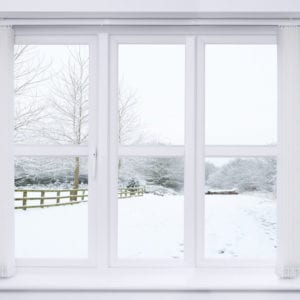When we ask our customers why they decided to rent a furnace, they usually reply with one of two answers:
- The low monthly cost of renting a furnace seemed more affordable than buying one up front.
- Since the rental cost covered any potential repairs, renting a furnace gave them cost certainty and peace of mind.
Put in those terms, it’s easy to see why so many homeowners in Ontario choose to rent their furnace instead of buying. Cost and peace of mind are top-of-mind when it comes to any home investment, especially when one that involves your family’s safety and comfort in our cold winter months.
For homeowners who cannot afford to purchase a new furnace (or who plan to move), it feels like a way to give their family top-of-the-line comfort without the cost or commitment.
However, those same reasons are exactly why we advise everyone – whether they’re an AtlasCare customer or not – to think twice about renting a furnace in Ontario.
It’s not to say that buying a furnace is always the better choice. Every family’s circumstances are different, and there may be situations where renting a furnace for your home makes the most sense in the long run.
But we do believe that anyone thinking of renting a furnace should know exactly what the decision will mean for them.
We encourage you to take these things into consideration before you sign a furnace rental contract.
1. Renting a Furnace Rarely Saves Money
Furnaces aren’t cheap.
Though it might not look it on the outside, a furnace is an intricate piece of equipment – and they’re only becoming more complex as smart home and energy management technology continues to advance.
Families looking to upgrade to the latest in energy-efficient heating systems can expect to pay an initial sum well into four figures. For top-of-the-line custom comfort solutions, the costs can run even higher.
Compare that to the monthly cost of renting a furnace in Ontario (approximately $175 to $250, depending on the deal) and the rental option looks far more affordable. Plus, rental contracts often cover the cost of a maintenance call, meaning no surprise repair bills.
But when you consider that furnace rental contracts usually last for 12 to 15 years – and that the monthly cost remains constant – renting a furnace could end up costing thousands more than buying a furnace outright.
Consider what happens when one homeowner purchases an energy-efficient furnace for $5,000 while another signs a contract to rent the furnace for $175 a month. The renter pays less in the first two years, paying $2100 in year one and $4,200 by year two.
If the homeowner who rented a furnace sells their home (and escapes the contract) in year two, they can come out on top (assuming rental costs don’t increase, which they do on average 3.5% every year.) But if the renter remains in the contract by the middle of year three, the renter and purchaser are even – and at the end of that year, the renter is down by $1200.
By the end of the 10-year contract, the renter has paid more than twice what the purchaser did for the same piece of equipment and still doesn’t own a furnace unless they pay an additional buyout cost. That, combined with interest rates of 18-22% on the term of the contact, make renting a furnace for more expensive than buying one in the long run.
2. Renting is Not the Same as Rent-to-Own
Most of the furnace rental contracts out there are just that – rentals. The homeowner pays a monthly fee to use the equipment in their house, but the furnace remains property of the rental company.
In other words, the monthly rental fee doesn’t go towards paying off the furnace.
At the end of the contract, the homeowner is typically left with three choices:
- Renew the lease agreement and reset the clock on the contract;
- Pay an additional buyout fee to purchase the furnace; or
- Pay a removal fee to get the furnace out of the house.
Considering many people who rent a furnace do so with the intention of saving money, none of these outcomes are favourable.
3. Renting a Furnace Removes the Choice of Service Provider
One of the perceived benefits of renting a furnace in Ontario is that it often comes with cost certainty as to repairs and maintenance. Ideally, this would mean that if your furnace ever breaks down, the rental company (or another service company they’ve agreed to work with) will be there to help.
But what happens if all their service technicians are fully booked, and they cannot respond for days or their office is closed for the holidays?
Your first instinct might be to fire up a Google Search for another emergency furnace service provider – not realizing that the rental contract prohibits you from using another service company.
If another contractor so much as touches the equipment, it could have consequences.
4. Renting a Furnace Makes it Harder to Sell Your Home
We mentioned in the example above that a homeowner who sells their home within the first few years of a furnace rental contract could come out on top in terms of costs.
Unfortunately, there’s a catch.
Savvy realtors are increasingly advising their clients against accepting the seller’s furnace rental contract when they purchase a home.
With the housing market cooling off, more and more buyers are insisting that sellers buy out of the rental contract as a condition of the sale. Essentially, renting a furnace decreases the value of your home – or at least makes it harder to sell. It takes what should be a four-figure asset and turns it into a potential liability.
First-time home buyers are especially vulnerable to this trap, since they’re most likely to move within the duration of the rental contract.
5. Renting a Furnace Can Impact Your Home Equity
Suppose that you have the sudden need to make extensive renovations on your home. Many homeowners in the Greater Toronto Area found themselves in this situation after their homes were damaged by floods in 2017, for example.
One possible recourse in these circumstances is to borrow against your home equity. But what if you discover that your equity is $8,500 more than you thought it was – all because of a furnace rental?
That’s what happened to one homeowner who tried to get a second mortgage after signing a lease with a major furnace company.
Many homeowners don’t realize how renting a furnace can impact their home equity. Rental contracts often register a lien or another form of interest (like a notice or lease of chattel) against the homeowner’s property to protect the company’s interest. It’s a big price to pay for short-term cost certainty.
Why Are Furnace Rentals So Common in Ontario?
In this post, we’ve discussed many of the ways we feel that homeowners end up on the losing end of a furnace rental contract. We also mentioned two of the main reasons why people sign onto these contracts: affordability and peace of mind.
However, there is one other reason why leasing furnaces and other home comfort equipment has become commonplace. Many newly-built homes are sold with these leases from day one.
So, if renting a furnace comes with so many pitfalls, why do so many new home builds come with a lease?
The answer is simple: it allows home builders to reduce the costs of building a home without having to reduce the asking price. Buyers don’t feel like they’re being sold a house without a furnace, and builders don’t have to invest in installing one outright.
These kinds of details are often overlooked in the fever of a housing market boom. Unfortunately, they can also trap buyers in an unfavourable position when it comes to their home’s most important equipment.
Alternatives to Renting a Furnace in Ontario
At AtlasCare, we believe it’s always important to own your own home comfort assets. It adds equity to your home, saves money in the long run, and allows the freedom to choose who services your equipment.
Still, we acknowledge that a furnace is a major purchase, and not everyone can afford to purchase new equipment outright.
That’s why we offer a number of finance options for furnace installation. Unlike rental contracts, financing agreements don’t lock homeowners in to an excessive 12 to 15-year term with an expensive buyout.
We also endorse the SNAP Home Finance program, which provides a line of credit to finance heating, cooling and ventilation equipment upgrades. AtlasCare has worked with SNAP customers for years and found it to be an efficient, consumer-friendly program.
If you’re not sure which route is right for your family, we’re always happy to sit down and help you explore the options. Call us at 647-952-2012 or contact us any time online.










